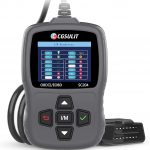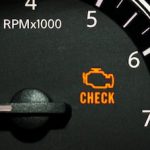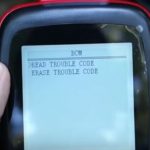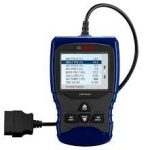Engine scanner codes help you to diagnose issues with your car’s powertrain. The codes are divided into powertrain components and are often related to your car’s emissions or transmission. If you’re experiencing a misfire in your engine, you may be looking at a transmission problem. Other possible problems may be related to your engine’s computer/electronics. And if you notice a high temperature, your car might have a problem with its catalytic converter.
P0xxx codes are for engine misfire
When your car shows a P0xxx code, it could be one of several things. Your vehicle could be experiencing engine misfire or a faulty ignition. Depending on the cause, it could be as simple as a faulty spark plug or worn-out wire. If you’re unsure of what a code means, you can refer to a code chart to determine the cause.
Engine trouble codes are a great way to diagnose problems with your car’s engine. They can help mechanics troubleshoot engine problems and determine what repairs are necessary. If your car is experiencing a misfire, this code will indicate a problem with the fuel level sensor circuit or the engine emissions idle control system. You may only have a simple issue, such as a loose gas cap, or it could be something more complicated.
A P0103x code indicates that the O2 sensor is malfunctioning. It can cause increased emissions and reduce fuel economy. Another common engine misfire code, P0133, indicates a problem with the oxygen sensor. This sensor is located in the exhaust system, and it must be in working order. This code may also be caused by a faulty O2 sensor or low voltage. A faulty powertrain control module will also cause this code.
A PCM scan can be difficult to interpret. A misfire code can indicate any number of different things, from wiring connections to faulty ignition. While these are all indicators of engine malfunctions, they don’t necessarily mean that your engine has a problem. Ultimately, the best way to determine the cause is to use a scanner. And don’t forget that you can always take your car to a repair shop if you’re unsure of what’s wrong with your vehicle.
In some cases, a malfunctioning ignition system may result in a faulty ignition. The misfire code P0300 represents the same failure on every vehicle. In order to determine what’s causing this problem, you must first identify the source of the problem. A P0xxx scanner code can be a good way to find the problem and resolve it. If you’re not sure which cylinder is the problem, you can use a scanner with a universal P0xxx code list.
If the car’s diagnostic trouble code is a P0xxx, your mechanic can easily replace it. You can also enter the last three digits of the code to determine what is causing the problem. After the diagnosis is completed, your mechanic can replace the damaged component and bring your car back to life. You’ll thank yourself for educating yourself on the intricacies of auto repair.
P0401 code is for transmission-related problem
This error code range indicates a problem with the onboard computer system. The electronic control units in your vehicle monitor performance and drivability, and these computers can be affected by a number of different problems. One problem related to the transmission computer is the powertrain control module communication link, or PCM. The code can indicate problems with the transmission or with programming. Here’s how to diagnose this problem on your vehicle.
A malfunctioning exhaust gas recirculation system (EGR) valve may be the cause of the P0401 engine scanner code. The EGR valve is responsible for sending exhaust gas back to the intake manifold, and a faulty EGR valve can cause this code to show up on your car’s diagnostic computer. EGR valves can stick because of carbon buildup or excessive wear, but it’s possible to fix the problem yourself by cleaning the valve.
If the P0401 engine scanner code is for transmission problems, you may need to replace the DPFE sensor. The DPFE sensor has a faulty reading, causing the engine to send exhaust fumes at an incorrect rate. To fix the problem, replace the faulty DPFE sensor. Once this sensor is replaced, the P0401 engine scanner code will no longer light.
Using a car scanner to check your car’s ECM will allow you to diagnose the cause of this code. The P0300 code indicates a problem with the ignition system, which transmits high voltage to the spark plug to ignite the air-fuel mixture. If this code indicates a problem with the transmission, the cause is more likely to be the ignition system. In most cases, a transmission-related problem will cause the P0316 code.
Another transmission-related problem is a low voltage reading of the TPS. If this occurs, the TPS voltage will not adjust properly. This can result in higher emissions. In addition, the P0132 code indicates that a low voltage condition in bank one sensor 2 is triggering the P0131 code. This means that the voltage in bank one sensor 1 is too low. In this case, the TPS voltage will remain low for at least two minutes.
The P0401 engine scanner code is set when the accelerator pedal position indicated angle is 0%. The vehicle is not in limp-home mode. The ECM monitors the MAF difference for 10 seconds and then indicates that there is insufficient EGR flow. A malfunction indicator lamp will be illuminated on the dash when these conditions are met. When the ECM sees that these conditions are met, it will send a DTC to the vehicle’s computer.
P0430 code is for catalytic converter issue
A P0430 engine scanner code is an indication that your vehicle’s catalytic converter is malfunctioning. The code may be present in your car when the check engine light comes on, but this is a general indication of the problem. If you notice your engine idling slowly or a lack of power, you may be dealing with a catalytic converter issue. Here are some common symptoms of a malfunctioning catalytic converter and how to fix them.
If you see the P0430 code on your engine scanner, it means that your catalytic converter has a problem. Your car is not able to produce enough oxygen to burn all the fuel. The converter must be replaced or adjusted to prevent exhaust leakage. The solution for a catalytic converter issue is to replace the catalytic converter. If this isn’t possible, a mechanic may also have to repair the engine’s oxygen sensor.
Having an inefficient catalytic converter can cause your engine to run smoothly most of the time, but over time it can damage the engine. Luckily, the check engine light will illuminate before the exhaust clogs the catalytic converter. If you notice this code, it’s best to get it checked as soon as possible. The catalytic converter is an extremely important part of your engine.
You can also notice a misfire or an O2 sensor error along with the P0430 engine scanner code. A faulty oxygen sensor is a simple fix and can help you avoid serious complications. If your catalytic converter is malfunctioning, your car will fail an emissions test and emit harmful gases. This is a serious problem and should be addressed immediately. So, what should you do if you see a P0430 code on your engine?
If you notice the Check Engine Light illuminated on your dashboard, pull over to a safe location and plug in an OBD-II engine scanner. The scan tool will display the P0430 code. P0430 stands for “Catalytic System Efficiency Below Threshold” and refers to an ineffective catalytic converter. If you do have this code, it’s a sign that your car’s catalytic converter is malfunctioning and needs to be replaced.
Another common cause of this P0430 code is a leaky exhaust system. Exhaust gas leaking from the catalytic converter can enter the cabin and cause the engine to run less efficiently. Ultimately, this could cause the catalytic converter to fail. However, there are some things you can do yourself to solve the problem. To avoid a costly repair, consider hiring a mechanic to replace the injectors in the catalytic converter.
Another common cause of the P0430 engine scanner code is a faulty oxygen sensor or fuel injector. While repairing a faulty catalytic converter is an expensive and time-consuming process, it is critical to repair the problem as soon as possible to ensure proper engine performance. If you’re not sure what’s wrong, you can consult with an experienced mechanic for an accurate diagnosis and repair.






